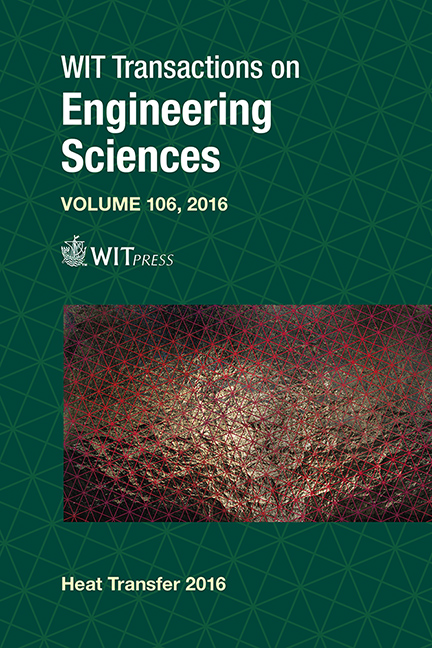Study Of Longitudinal Heat Transfer In Low Temperature Heat Pipes With Axial Grooves And Discrete Metal Fibres For Space Thermal Control Systems
Price
Free (open access)
Transaction
Volume
106
Pages
12
Page Range
115 - 126
Published
2016
Size
922 kb
Paper DOI
10.2495/HT160121
Copyright
WIT Press
Author(s)
V. Baturkin, T.-M. Ho
Abstract
Heat pipe technology became an integral part of the thermal control systems of space missions to transfer heat and control the temperature. The selection, design and the integration of heat pipes in space hardware requires the knowledge about their thermal performance. One of the major characteristics is the longitudinal resistance. This paper presents the experimental results of the longitudinal heat transfer in constant and variable thermal resistance heat pipes (HP) with diameters between 0.006 to 0.012 m: “a”) aluminium – ammonia HP with axial grooved capillary structure; “b”) stainless steel – methanol HP with stainless steel discrete metal fibre capillary structure; “c”) copper – methanol HP with copper discrete metal fibre capillary structure. The tests have been performed within a wide range of operation parameters: heat sink temperature from -75 up to +60°C, the transferred heat power from 0.5 up to 100 W, the axial heat flux density up to 250 W/cm2. As characteristic parameter the longitudinal thermal resistance RHP=(Tev-Tcon)/QHP is used, where QHP is the transferred heat power and Tev and Tcon are the average temperatures of the heat input and output zones, respectively. For the HPs “a” the parameter RHP varies from 0.06 to 0.045 K/W. The change of Tcon has no essential impact on the HP thermal resistance. For the HP “b”, RHP changes from 80 to 4 K/W. The physical basis of such behaviour is related to the formation of vapor and non-condensable gas boundary in the coldest part of the heat pipe and, as consequence, a heat transfer intensity variation. The HPs “c” have shown essential impact of Tcon on resistance, which varies from 70 to 0.4 K/W. The physical basis of such behaviour is connected a change of the vapor flow regime in the inner vapor space and with change of the inner heat transfer intensity. The comparison of the longitudinal heat transfer characteristics of different types of heat pipes allows us to define their functional abilities in thermal control systems (TCS) for different space applications and to use these data in TCS mathematic models.
Keywords
thermal control, heat pipe, heat transfer, study





